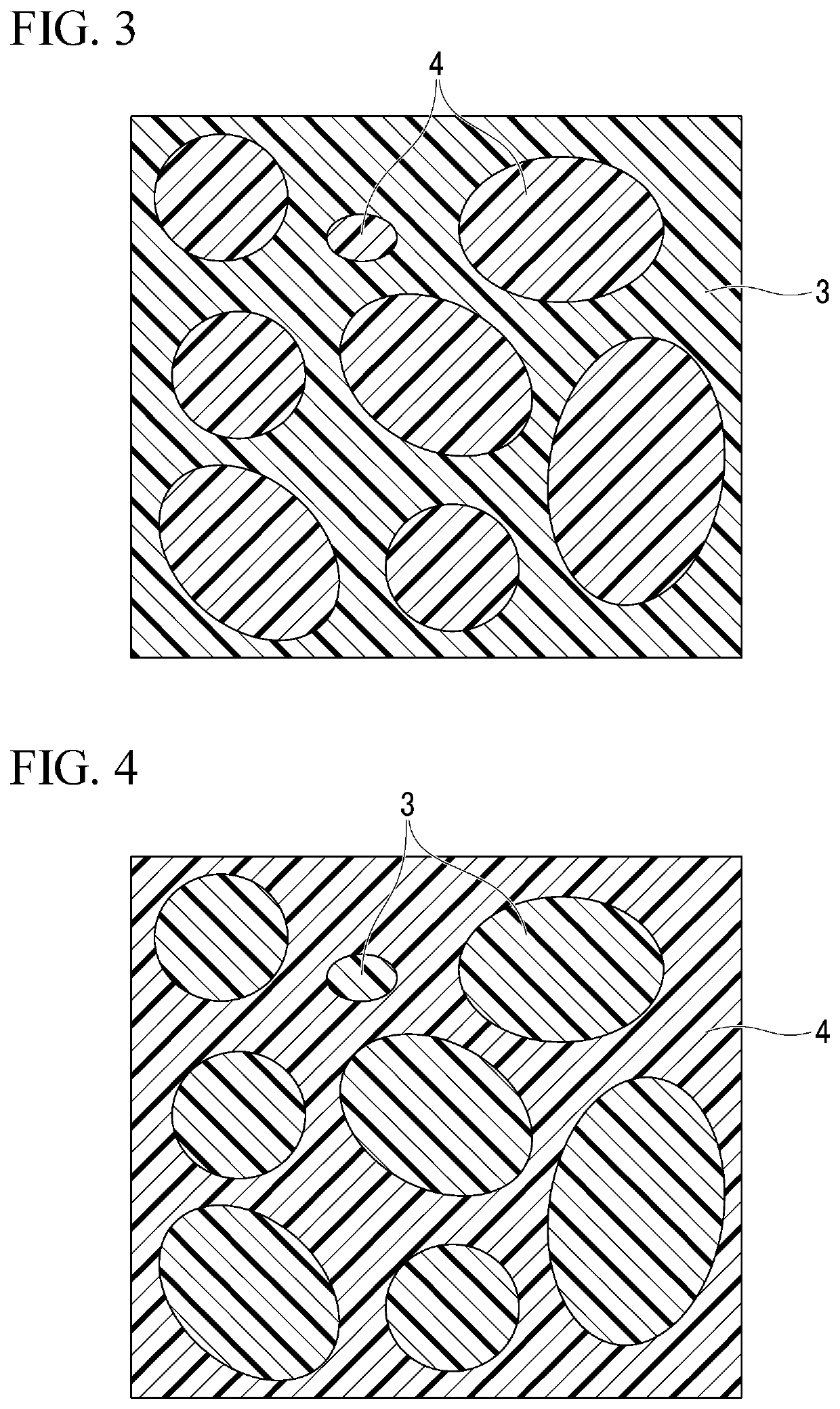Magnetoresistance effect element
a technology of magnetic field and effect element, applied in the field of magnetic field, can solve the problem of difficult to obtain sufficient large mr ratio, and achieve the effect of large mr ratio
- Summary
- Abstract
- Description
- Claims
- Application Information
AI Technical Summary
Benefits of technology
Problems solved by technology
Method used
Image
Examples
first embodiment
[0039]FIG. 1 is a cross-sectional view of a magnetoresistance effect element according to a first embodiment. First, directions will be defined. The direction in which layers are laminated may be referred to as a lamination direction. Further, a direction that intersects the lamination direction and spreads each layer may be referred to as an in-plane direction.
[0040]A magnetoresistance effect element 10 shown in FIG. 1 includes a first ferromagnetic layer 1, a second ferromagnetic layer 2, a first non-magnetic layer 3, and a second non-magnetic layer 4.
[0041]The magnetoresistance effect element 10 outputs a change in the relative angle between the magnetization of the first ferromagnetic layer 1 and the magnetization of the second ferromagnetic layer 2 as a resistance value change. For example, the magnetization of the second ferromagnetic layer 2 moves easily rather than the magnetization of the first ferromagnetic layer 1. When a predetermined external force is applied, the magne...
example
Example 1
[0121]As Example 1, the magnetoresistance effect element 10 shown in FIG. 1 was manufactured. The underlayer and the cap layer were made of Ru and the first ferromagnetic layer 1 and the second ferromagnetic layer 2 were made of a Heusler alloy having a composition ratio of Co2FeGa0.5Ge0.8. The first non-magnetic layer 3 was made of Ag and the second non-magnetic layer 4 was made of MgO.
[0122]The magnetoresistance effect element 10 according to Example 1 was manufactured according to the following procedure. First, a Ru underlayer was formed on an amorphous substrate by sputtering. Next, a first ferromagnetic layer with the above-described composition was formed. At this time point, the first ferromagnetic layer was amorphous.
[0123]Next, an alloy film with a thickness of 0.5 nm was sputtered on the first ferromagnetic layer by using the alloy of Mg and Ag as a target. The composition ratio of Mg and Ag in the target of the alloy of Mg and Ag is Mg:Ag=50:50 in atomic percent...
examples 2 to 7
[0130]Examples 2 to 7 are different from Example 1 in that the ratio occupied by the second non-magnetic layer 4 in a plan view of the magnetoresistance effect element 10 is changed. In Examples 2 to 8, the area ratio occupied by the second non-magnetic layer 4 in a plan view was changed by changing the composition ratio of Mg and Ag in the Mg and Ag alloy layer.
[0131]In Example 2, the area ratio occupied by the second non-magnetic layer 4 in a plan view from the lamination direction was 5%.
[0132]In Example 3, the area ratio occupied by the second non-magnetic layer 4 in a plan view from the lamination direction was 10%.
[0133]In Example 4, the area ratio occupied by the second non-magnetic layer 4 in a plan view from the lamination direction was 20%.
[0134]In Example 5, the area ratio occupied by the second non-magnetic layer 4 in a plan view from the lamination direction was 30%.
[0135]In Example 6, the area ratio occupied by the second non-magnetic layer 4 in a plan view from the la...
PUM
 Login to View More
Login to View More Abstract
Description
Claims
Application Information
 Login to View More
Login to View More - R&D
- Intellectual Property
- Life Sciences
- Materials
- Tech Scout
- Unparalleled Data Quality
- Higher Quality Content
- 60% Fewer Hallucinations
Browse by: Latest US Patents, China's latest patents, Technical Efficacy Thesaurus, Application Domain, Technology Topic, Popular Technical Reports.
© 2025 PatSnap. All rights reserved.Legal|Privacy policy|Modern Slavery Act Transparency Statement|Sitemap|About US| Contact US: help@patsnap.com



